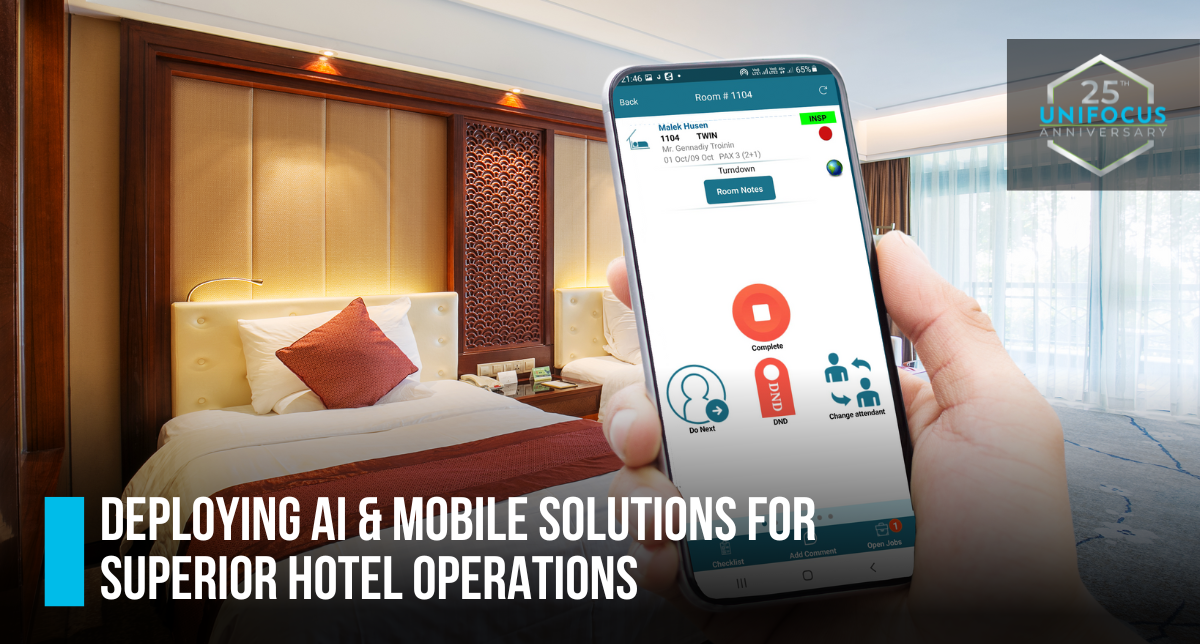During the pandemic, life and the way we all work truly shifted. We are currently seeing this fundamental shift play out in the service industry labor crisis. Tech companies seem to have a solution figured out - and not just for their office workers.
Before the pandemic, we saw the rise of the gig economy. Companies like Uber and Door Dash capitalized gig labor models that are founded on flexible schedules and a strong technology backbone. Services industries can take inspiration and embrace a gig mentality to make sustainable changes to their labor approach that attracts employees and improves bottom lines in the long run.
There are 4 high-impact ways a gig mindset can offset the labor crisis:- Provide flexible work schedules
- Identify benefits that really matter
- Automate and optimize tasks
- Foster a culture and work environment that inspires raving fans
Provide Flexible Work Schedules
One of the biggest draws that the gig economy offers is that workers control their own schedules. This became a necessity as the pandemic threw childcare and school schedules to the wind. Approaching the labor crisis with a gig mindset can open new labor pools that were previously off limits because of prehistoric approach to shift scheduling. While dependable and easy to manage, industrial-era schedules have turned more than one segment of the labor force away because their rigidity doesn’t easily fit into modern family life.
A flexible gig mindset opens a whole new world. Consider working moms. If morning shifts start at 7:00 am, they would be hard-pressed to get out the door, get the kids to school(s) on time, and get to work by 7:00. Or they would have to find reliable childcare for the morning, which is another expense factoring into their choice of where to work. Let’s face it - that does not create a great family environment and adds stress that your employees will bring to work.
Typical shifts based on the industrial revolution and daylight-saving time might have run their course. Getting creative with gig shifts holds a lot of promise. For example, offering shift options from 9:00 am to 1:00 pm (while the kids are in school) brings parents that would like to work back into the active workforce. If it works better for someone to work three shifts of ten hours, why wouldn’t we let them? Conversely, if shorter shifts were open, service industries would become more attractive in the labor market.
As another labor source, many hotels are focusing their recruitment efforts on are schools. This generation is familiar with the gig economy concept and is likely to find existing shift and scheduling protocols dated and uninspired. Capturing the minds and hearts of the next generation of leaders with a flexible and progressive scheduling model should be a united focus throughout service industries.
The key is to find the right mix of shift length to both meet the market’s needs and execute your service standards. Managing a higher volume of shorter and varied shift starts is daunting if you’re still building shifts manually. We will touch on technology that can automate scheduling, availability, work rules, and compliance in a minute.
Identify Benefits that Really Matter
Instant Pay
Like scheduling, how often we pay employees needs to be rethought.
Many front-line workers are living paycheck-to-paycheck and are too proud to let you know their struggles. Some are incurring the excessive costs of being unbanked or underbanked. Many turn to financial institutions like payday loan providers to get cash when they need it, instead of when payday comes around. Financial service providers are charging your lowest-paid employees a lot just to access their earned wages.
The good news is that employers can give employees access to their wages daily and without having to have a bank account. Instant pay services are free to employers and have other tools that restore the financial health of your employees. By providing relief to one of their fundamental needs and stressors, your employees will be more focused and productive.
Investing in your employees’ financial success earns their trust and loyalty, which reduces turnover and increases the likelihood they will recommend that their friends consider working with you as well.
Gainsharing and pay-for-skill
There isn’t a lot of incentive for frontline service workers to advance their careers or earn more income. Some companies have been revisiting the 40-year-old concept of gainsharing as the labor crisis continues. With gainsharing, employees receive a bonus that is tied to profit gains in the business (most often operational measures).
Businesses are also reconfiguring their pay structures with a pay-for-skill mindset. In this model, employees can learn new skills and earn better hourly rates. They are consistently paid for their skill level, regardless of the standard pay rate for the department/location they are scheduled for. The pay-for-skill model lays out a career path for employees while increasing tenure and decreasing turnover.
At a time when cross-utilization is a common practice, the pay-for-skill model introduces more flexibility within your labor base to match demand and market changes. The introduction of skill achievement is a great way to introduce gamification or take your gamification to the next level.
Apps
Technology might not be top of mind when considering benefits, but employees struggle when they have to learn old technology, just for their work lives. Communication doesn’t have to be an issue now that most employees have a smartphone where they can receive real-time notifications and messages.
Schedule flexibility is something that employees have been craving and one key element to delivering this is making schedules visible. Employees like seeing when they are scheduled, which shifts are open, and who they will be working with. The ability for them to swap shifts and see open shifts they can fill gives them a sense of flexibility and control over their work and personal lives.
If you’re targeting younger workers - arming your workforce with the right technology is a must.
Automate and Optimize
Adopting a gig mindset adds layers of complexity to service industry scheduling and operations which can seem daunting if things are still mostly manual.
One thing the tech companies that inspired the gig economy have in common - they automate everything possible. This isn’t a new concept. Manufacturers have been finding large areas of cost savings by optimizing their processes and automating everything to maximize production at the lowest cost.
Workforce management platforms take reservations and other business variables, plug them into your staff’s availability, and layer in workplace rules and compliance to give you the ideal schedule. Better yet, employees can see and easily swap shifts that don’t allow them to go into overtime or violate work rules.
What makes these systems perfect for managing gig shifts is the ability to get granular with shift timing - down to 15-minute segments. With the labor crisis limiting employee numbers, managers can forecast demand and correctly invest their labor hours to cover peak days and times with precision.
For managers, automatic scheduling saves several hours every week that can be put back into other tasks while compliance alerts operate in the background. Filling open shifts becomes a breeze with automatic communication to their desired staff segment. For employees, it represents a quick and easy way to make a change to their schedule change or pick up another shift.
Culture
No amount of technology can replace the human touch when creating an amazing guest experience, and it all starts with happy employees. When staff feel like they matter to their employers, they are more productive and give better guest service which translates into guest loyalty and ultimately revenue.
When gig workers felt that Uber wasn’t treating them fairly, they went to Lyft. Your staff can also easily change jobs – they are in high demand. Healthy work environments that thrive are transparent, flexible and thoughtful about the employee experience. When it is all hands on deck, it is hard to keep culture in focus or follow through on some of the core tenets of good culture.
Operating in a labor crisis crushes the employee experience by creating a stressful situation where employees are overworked and clocking in some serious overtime. Frontline workers are burning out at alarming rates which exacerbates the situation.
A gig mindset can better balance the workflow during shifts by tapping into labor forecasting models that predict demand and layer in other business variables to be more precise when allocating labor budgets. Gig thinking can be broken down into 15-minute segments which gives managers the flexibility they need to bring staff in to keep up with demand and balance the levels of stress on the other team members.
For employers that have mastered the art of schedule balancing, word is getting out that their business is a great place to work and attracts more employees.
While managers are rolling up their sleeves and covering shifts, there is technology that can help them provide transparency and flexibility around scheduling and shift changes. By leaning on technology to automate and cover part of their responsibilities, managers can keep their focus on other more pressing areas.
Time to innovate
When operating in crisis mode, it can be hard to see sustainable solutions to one of the biggest catastrophes the industry has seen. One thing is for sure, the industry is resilient and from great trials come great opportunities and advancements.
If you are looking for another perspective, we would be happy to take a look at your portfolio of properties to help identify areas of opportunity. Click here to set up some time to connect. ⬡








